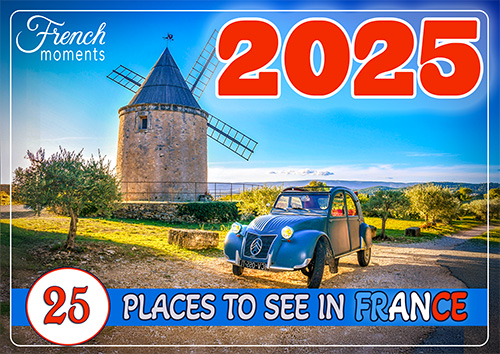Nancy holds a special place in my heart–it’s a city where I’ve walked the same streets that witnessed the historic Battle of Nancy, and where the echoes of the past resonate through every corner.
Nestled in Lorraine, this unassuming town once played a pivotal role in reshaping Europe’s map in the 15th century.
Its frozen marshes became the stage for a battle that marked the fall of Charles the Bold and changed the course of European history.
Let me take you on a journey through this tale of ambition, resilience, and tragedy, seen through the lens of a place I call home.
A City Born from the Marshes
Long before Nancy became known for its magnificent Place Stanislas and Art Nouveau treasures, it was a swampy basin nestled between the Meurthe River and the Moselle hills.
The name “Nancy” itself may come from the Celtic word “Nant,” meaning marsh.
In the 10th century, this mosquito-infested patch of land seemed an unlikely site for a thriving city.
Yet, in 1061, Duke Gérard of Alsace saw the strategic potential of the terrain.
He built a fortress amidst the wetlands, which provided natural defences against invaders.
Over time, this humble settlement grew, taming the marshes and expanding into a bustling medieval town.
By the 13th century, Nancy had established itself as an important centre for trade and culture, with its marshy beginnings providing the foundations for resilience and ingenuity.

The Rising Ambitions of Charles the Bold
By the 15th century, Nancy had become the capital of the Duchy of Lorraine, a strategic crossroads between France and the Holy Roman Empire.
It was also a prize coveted by Charles the Bold, Duke of Burgundy.

Charles dreamed of uniting his territories into a vast kingdom that would rival France and the Empire.
Lorraine, sitting squarely in his path, was key to his plans.
Charles’s ambitions extended beyond mere territorial conquest.
He sought to revive the glory of the ancient kingdom of Lotharingia, a state that once spanned modern-day France, Belgium, Luxembourg, and parts of Germany.
![The States of Burgundy at the time of Charles the Bold © Marco Zanoli - licence [CC BY-SA 4.0] from Wikimedia Commons](https://frenchmoments.eu/wp-content/uploads/2025/01/Etat-de-Bourgogne-de-Charles-le-Temeraire-©-Marco-Zanoli-licence-CC-BY-SA-4.0-from-Wikimedia-Commons.png)
His dream was audacious, but it also made him a formidable adversary to both King Louis XI of France and Emperor Frederick III.
In 1475, Charles captured Nancy, but his triumph was short-lived.
Duke René II of Lorraine rallied allies, including Swiss mercenaries, to retake the city.
By October 1476, Charles was forced to retreat, but he was far from defeated.
The Battle of Nancy: How It All Begun
The Desperate Winter Siege
Furious and determined, Charles returned to Nancy later that year to lay siege once more.
It was late October, and winter was approaching.
His advisors warned against the campaign, but Charles’s pride would not allow him to delay.
The siege dragged on through one of the harshest winters on record.
The Burgundian army, camped outside Nancy’s walls, suffered from freezing temperatures and dwindling supplies.
Desertions grew, while morale plummeted.
Inside the city, the situation was equally dire. Cut off from the outside world, residents resorted to eating rats, dogs, and cats to survive.

Firewood was so scarce that they dismantled their roofs for warmth.
Charles’s decision to press on despite these conditions reflected both his determination and his inability to adapt.
His insistence on continuing the siege turned what might have been a strategic retreat into a disastrous standoff.
For the people of Nancy, however, the siege became a symbol of their resilience and unity in the face of overwhelming odds.
The Battle of Nancy: January 5th, 1477
On a snowy winter morning, Duke René II and his allies launched a surprise attack on the Burgundian forces.
The icy terrain and marshy ground added chaos to the battle.

Soldiers slipped on frozen fields, horses floundered in the mud, and men fell into icy waters.
René’s forces, bolstered by Swiss mercenaries and regional allies, overwhelmed Charles’s beleaguered troops.
![Map of the Battle of Nancy © Odejea - licence [CC BY-SA 3.0] from Wikimedia Commons](https://frenchmoments.eu/wp-content/uploads/2025/01/Plan-Bataille-de-Nancy-©-Odejea-licence-CC-BY-SA-3.0-from-Wikimedia-Commons-927x1024-1.png)
Near the Saint-Jean marshes, the Burgundian lines collapsed.
Charles the Bold, caught off guard, retreated to his command post but was surrounded.
The exact circumstances of Charles’s death remain a mystery.
Some say he was struck down in the chaos of battle, his identity unrecognised by the soldier who delivered the fatal blow.
Others claim he became trapped in the frozen marshes, weighed down by his heavy armour.
His body was found two days later, frozen and mutilated near the marshes of Saint-Jean.

A Monumental Turning Point for Europe
The death of Charles the Bold reshaped the political landscape of Europe.
France annexed key Burgundian territories, including Picardy and the Duchy of Burgundy, strengthening its position as a major power.
Meanwhile, the Duchy of Lorraine regained its independence within the Holy Roman Empire.
This pivotal event also marked the beginning of a long-standing rivalry between France and the Habsburgs.
Three months after the battle, Charles’s daughter, Mary of Burgundy, married Archduke Maximilian of Austria.
This union transferred much of Charles’s legacy to the Habsburgs, setting the stage for centuries of tension and conflict that would shape European politics until the Treaty of Westphalia in 1648.
The Battle of Nancy’s Legacy
Today, the marshes that once surrounded Nancy are long gone, replaced by bustling neighbourhoods and modern infrastructure.
However, traces of this dramatic chapter remain.
The Croix de Bourgogne (Cross of Burgundy), a monument commemorating the battle, stands as a reminder of the day Nancy changed the course of history.
Visitors to Nancy can still explore sites that connect the modern city to its medieval past.

The Place de la Croix-de-Bourgogne marks the approximate location of Charles’s final moments, while the Duke’s Palace serves as a reminder of Lorraine’s independent spirit.

The transformation of the former marshlands into vibrant urban spaces is itself a testament to the city’s enduring resilience.
A Misleading Painting by Delacroix!
Let’s pause to examine Eugène Delacroix’s renowned painting from 1831, often linked with the Battle of Nancy and featured in this article.

This artwork, commissioned by the City of Nancy, brilliantly captures the drama and emotion of the 1477 battle, but it also takes notable liberties with historical facts.
For instance, Duke René II, prominently depicted in the scene, was not actually present at the moment of Charles the Bold’s death.
Historical records show that René sent out search parties to locate Charles’s body over the two days following the victory.
Additionally, the battle itself unfolded southeast of Nancy near the Jarville stream, rather than by the Saint-Jean pond, where Charles ultimately met his tragic end.
These artistic choices were likely made to amplify the symbolic impact of the painting, emphasising the themes of triumph and legacy over strict accuracy.
Nonetheless, such liberties would undoubtedly earn it the label of “fake news” in today’s media landscape!
Commemorating the Battle of Nancy Today
Nancy honours its historical significance through annual events and exhibitions.
The city’s museums, such as the Lorraine Museum, host artefacts and documents that tell the story of the battle and its impact on Europe.
Local historians and enthusiasts organise guided tours to immerse visitors in the medieval atmosphere of the city and its pivotal role in European history.

As we approach the 550th anniversary of the Battle of Nancy in 2027, these efforts to preserve and celebrate its legacy are more relevant than ever.
The story of Nancy is not just about a single battle; it is about a city that has continually reinvented itself, transforming challenges into opportunities.

Share Your Thoughts
What do you think of Nancy’s fascinating history?
Did this story change your perspective on the city or its role in European history?
Let me know in the comments below!



